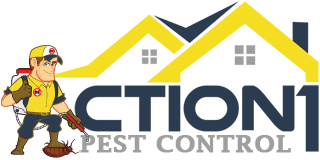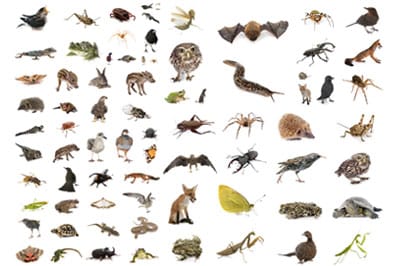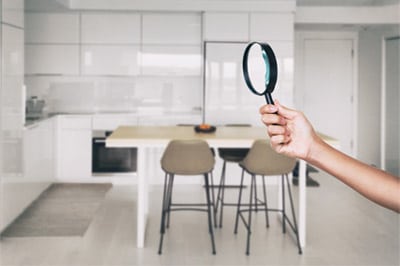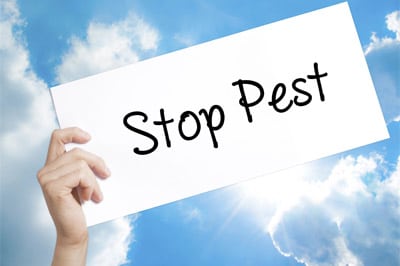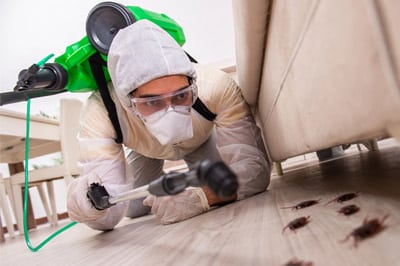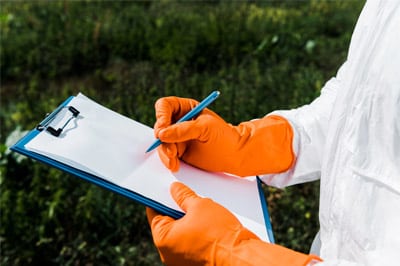Commercial Pest Control and Extermination
Call Us Today- Home
- »
- Commercial
Commercial pest control is a specialized service that protects businesses from the health risks, property damage, and reputation threats that pests create in professional environments. Unlike residential pest management, commercial services require industry-specific approaches that address unique challenges faced by restaurants, healthcare facilities, retail spaces, and manufacturing operations.
We understand that a single pest sighting can devastate a business’s reputation and lead to costly compliance violations. Rodents and insects don’t just cause structural damage – they contaminate products, spread diseases, and create unsanitary conditions that put customers and employees at risk.
We will help you identify common workplace pests to developing effective prevention strategies.
Highly Trusted Commercial Pest Control Company
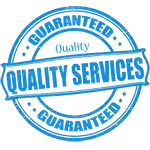
High Quality Services

Affordable & Upfront Pricing

Emergency Same Day Service
What is Commercial Pest Control?
Commercial pest control protects business properties from infestations through systematic management strategies designed for larger-scale operations. It differs significantly from residential services in scope, regulations, and specialized approaches required for various business environments.
Definition and Scope
Commercial pest control encompasses professional services that manage and eliminate pests in business environments including offices, restaurants, hospitals, warehouses, and retail spaces. We target a broader range of pests than residential services typically handle.
Our approach involves multiple techniques including chemical treatments, biological controls, and physical barriers. We customize strategies based on each business type since a restaurant requires different protocols than an office building.
Common commercial pests we address include:
- Rodents that damage electrical systems
- Cockroaches in food preparation areas
- Termites threatening structural integrity
- Ants disrupting operations
- Flying insects affecting customer experience
We often encounter pest problems during goods transportation or through building vulnerabilities. Our services extend beyond treatment to include prevention strategies and employee education programs.
Importance for Businesses
Pest infestations pose serious threats to business operations beyond simple nuisance factors. We protect companies from revenue loss due to forced closures and significant reputational damage.
Health risks represent a primary concern, especially in food service and healthcare settings. Contaminated products or unsafe environments can result in regulatory violations and customer illness.
Key business impacts we help prevent:
- Property damage from structural pests
- Health code violations leading to fines
- Customer complaints affecting reputation
- Employee safety issues in work environments
- Product contamination causing liability
We implement Integrated Pest Management (IPM) approaches that focus on prevention while minimizing chemical exposure. This method balances effective treatment with safety considerations for employees and customers.
Differences from Residential Pest Control
Commercial pest control operates at a fundamentally different scale and complexity than residential services. We handle larger spaces requiring more extensive treatments and faster response times to minimize business disruption.
Scale: Commercial properties demand comprehensive coverage across multiple zones, often requiring specialized equipment and larger treatment teams.
Regulations: Businesses face stricter compliance requirements, particularly in food service and healthcare industries where we must follow specific safety protocols.
Timing: We schedule treatments during off-hours to avoid disrupting operations, unlike residential services that offer more flexible scheduling.
Documentation: Commercial clients require detailed reporting and documentation for regulatory compliance and insurance purposes.
We develop long-term preventative strategies rather than reactive treatments. Our commercial approach emphasizes ongoing monitoring and maintenance to prevent infestations before they impact business operations.
Our 5 Step Commercial Pest Control Process
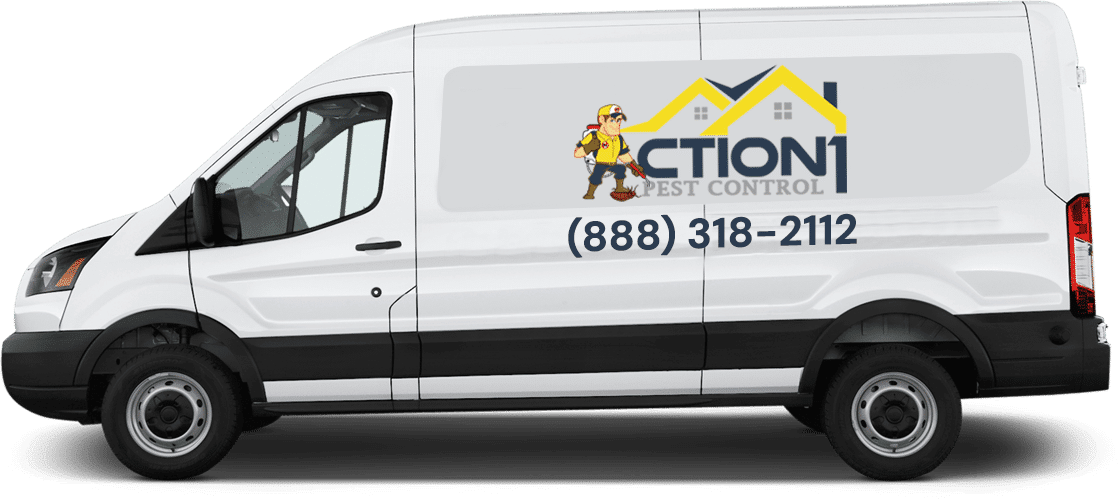
Types of Commercial Pest Control Services
Commercial pest control services encompass three primary approaches that address different business needs and environments. These services range from comprehensive management systems to specialized response strategies tailored for specific industries and situations.
Commercial Integrated Pest Management (IPM)
Integrated Pest Management (IPM) combines multiple control methods to create sustainable, long-term pest solutions. We use biological, physical, and chemical tools together rather than relying on a single approach.
This method starts with thorough inspections to identify pest entry points and breeding areas. We then implement habitat modification, exclusion techniques, and targeted treatments based on specific pest behaviors and life cycles.
IPM emphasizes prevention through environmental controls like sealing cracks, eliminating moisture sources, and proper waste management. We monitor pest activity continuously and adjust strategies based on seasonal patterns and effectiveness data.
Key IPM Components:
- Inspection and monitoring – Regular assessments of pest activity levels
- Prevention measures – Structural modifications and sanitation improvements
- Targeted treatments – Specific applications based on pest species and location
- Documentation – Detailed records for regulatory compliance and strategy refinement
The approach reduces chemical dependency while maintaining effective control. We focus on eco-friendly methods that minimize environmental impact while meeting strict health and safety standards required in commercial settings.
Preventative Versus Responsive Services
Preventative services involve scheduled treatments and monitoring before infestations occur. We establish regular inspection schedules and apply barrier treatments to stop pests from entering commercial properties.
These services include quarterly or monthly visits depending on facility risk levels. We treat potential entry points, monitor bait stations, and conduct thorough property assessments to identify vulnerabilities.
Responsive services address active infestations requiring immediate attention. We deploy emergency treatments for sudden pest problems that threaten business operations or regulatory compliance.
Service Comparison:
| Preventative | Responsive |
|---|---|
| Scheduled visits | Emergency calls |
| Lower long-term costs | Higher immediate costs |
| Regulatory compliance focus | Crisis management |
| Consistent protection | Targeted elimination |
Most effective commercial programs combine both approaches. We recommend preventative contracts with responsive service availability for unexpected situations that require immediate pest control expert intervention.
Discreet and Customized Solutions
Commercial pest control solutions must address unique industry requirements without disrupting business operations. We develop customized treatment plans based on facility type, pest pressure, and regulatory standards.
Restaurant pest control focuses on food safety areas with treatments scheduled during off-hours. We use odorless applications and discrete monitoring devices that don’t interfere with customer experience.
Healthcare facilities require specialized protocols meeting strict sanitation standards. We coordinate treatments around patient care schedules and use hospital-grade materials approved for medical environments.
Industry-Specific Approaches:
- Food service – Focus on kitchen areas and storage zones
- Healthcare – Patient safety and infection control protocols
- Retail – Customer-facing area treatments during closed hours
- Warehouses – Large-scale rodent control and perimeter protection
Office buildings need treatments that don’t disrupt employee productivity. We schedule services during evenings or weekends and use low-profile monitoring stations in common areas.
Our pest control experts customize application methods, product selection, and service timing to match each facility’s operational requirements while maintaining effective pest management standards.
Developing an Effective Pest Control Plan
Creating a comprehensive pest control plan requires thorough property assessment, customized treatment strategies, and ongoing monitoring systems. These three components work together to establish a proactive defense against pest infestations.
Conducting Property Inspections
Property inspections form the foundation of any successful pest control plan. We must identify potential entry points, moisture sources, and areas where pests commonly establish themselves.
Interior inspection priorities include checking food storage areas, utility rooms, and spaces with plumbing connections. We examine cracks in walls, gaps around pipes, and damaged weather stripping that provide pest access routes.
Exterior assessments focus on building perimeters, loading docks, and landscaping features. We inspect foundation cracks, damaged screens, and areas where vegetation contacts the building structure.
Documentation during inspections helps track problem areas over time. We record pest activity signs, structural vulnerabilities, and environmental conditions that attract unwanted species.
Professional inspectors use specialized tools like moisture meters and thermal imaging to detect hidden issues. These technologies reveal conditions that support pest populations before visible infestations occur.
Tailoring Pest Control Plans
Effective pest control plans must address the specific challenges of each business environment. We develop targeted strategies based on industry requirements, facility layout, and identified pest pressures.
Integrated Pest Management (IPM) approaches combine prevention, monitoring, and treatment methods. We prioritize non-chemical solutions while maintaining chemical options for severe infestations.
Different industries require specialized considerations:
| Industry Type | Key Focus Areas |
|---|---|
| Food Service | Kitchen equipment, storage areas, waste management |
| Healthcare | Patient areas, pharmaceutical storage, sanitation |
| Retail | Stock rooms, customer areas, delivery zones |
| Manufacturing | Production lines, raw materials, shipping areas |
| Nursing Homes | Common areas, kitchen, bedrooms |
| Office Buildings | Inside, outside, offices |
Treatment frequency varies based on risk levels and seasonal patterns. We establish regular service schedules while maintaining flexibility for emergency responses.
Commercial Monitoring and Maintenance
Ongoing monitoring ensures pest control plans remain effective throughout the year. We implement systematic tracking methods to detect early signs of pest activity.
Regular monitoring stations provide continuous surveillance between service visits. We place bait stations, sticky traps, and pheromone monitors in strategic locations to capture pest activity data.
Service documentation tracks treatment effectiveness and identifies trends. We maintain detailed records of pest sightings, treatment applications, and environmental changes that influence pest behavior.
Seasonal adjustments address changing pest pressures throughout the year. We modify treatment approaches based on weather patterns, pest life cycles, and facility usage changes.
Staff training enhances monitoring capabilities by teaching employees to recognize pest signs. We provide guidelines for reporting suspicious activity and maintaining sanitary conditions that support pest prevention efforts.
Common Pests in Commercial Settings
Commercial properties face persistent threats from various pest species that can damage inventory, contaminate products, and harm business reputation. Ants create sanitation issues and structural damage, flies spread disease and contaminate food surfaces, termites cause costly building damage, and stored product pests destroy merchandise and raw materials.
Ants
Ants pose significant challenges in commercial environments due to their persistent foraging behavior and ability to establish large colonies. We commonly encounter species like carpenter ants, pavement ants, and pharaoh ants in office buildings, restaurants, and retail spaces.
Carpenter ants damage wooden structures by excavating galleries for nesting. They prefer moist wood and can weaken building foundations over time.
Pharaoh ants present serious health risks in healthcare facilities and food service establishments. These small yellow ants can transmit bacteria and are notoriously difficult to eliminate due to their multiple nesting sites.
Ant infestations typically begin when scout ants discover food sources or moisture. Once they establish trails, worker ants follow pheromone paths to transport food back to colonies.
We see increased ant activity during spring months when colonies expand. Prevention focuses on eliminating food debris, sealing entry points, and addressing moisture problems that attract these pests.
Flies
Flies create immediate health and sanitation concerns in commercial settings, particularly restaurants, healthcare facilities, and food processing plants. We identify several problematic species that businesses must address promptly.
House flies contaminate surfaces and food products by transferring bacteria from their previous feeding locations. They breed rapidly in organic waste and can complete their lifecycle in just two weeks.
Fruit flies target ripened produce and sugary substances. These small flies multiply quickly around drains, garbage disposals, and fruit storage areas.
Drain flies emerge from organic buildup in floor drains and sink pipes. They indicate underlying sanitation issues that require immediate attention.
Fly infestations signal poor sanitation practices and can trigger health department violations. We recommend implementing strict waste management protocols, maintaining clean drains, and installing proper screening on windows and doors.
Temperature control also affects fly activity, as warmer environments accelerate breeding cycles and increase population growth rates.
Termites
Termites cause billions of dollars in structural damage annually and represent one of the most destructive pests affecting commercial properties. We encounter both subterranean and drywood termite species that attack buildings differently.
Subterranean termites live in soil and build mud tubes to access wooden structures above ground. They require moisture contact and typically attack buildings from foundation levels upward.
Drywood termites infest wood directly without soil contact. They create hard pellet droppings and can damage furniture, fixtures, and structural components.
Early detection proves critical because termite damage occurs slowly over months or years. We look for signs including discarded wings, mud tubes, hollow-sounding wood, and small holes in wooden surfaces.
Commercial properties with extensive woodwork, basements, or ground-level wooden structures face higher termite risks. Regular professional inspections help identify infestations before major structural damage occurs.
Prevention strategies include moisture control, wood treatment, and maintaining physical barriers between soil and wooden building components.
Stored Product Pests
Stored product pests damage inventory and contaminate goods in warehouses, grocery stores, and food processing facilities. We commonly encounter beetles, moths, and weevils that target grains, dried foods, and organic materials.
Indian meal moths infest cereals, pet food, and dried fruits. Their larvae create webbing and contaminate products with silk and excrement.
Cigarette beetles attack tobacco products, spices, and dried foods. These small brown beetles can penetrate packaging and spread throughout storage areas.
Rice weevils bore into whole grains and can destroy large quantities of stored products. Adult weevils leave characteristic round holes in infested grains.
Cockroaches are commonly known as household pests, they can also infest food storage areas and contaminate stored products. They are attracted to food sources and can chew through packaging, contaminating food with their droppings and body parts.
These pests often arrive in facilities through incoming shipments. We recommend inspecting all deliveries and implementing proper storage rotation practices.
| Common Signs | Pest Type | Action Required |
|---|---|---|
| Webbing in food products | Indian meal moths | Discard infested items |
| Small round holes in grains | Rice weevils | Inspect entire inventory |
| Adult beetles near stored goods | Cigarette beetles | Check surrounding products |
| Attracted to stored foods | Cockroaches | Inspect inventory and surrounding products |
Temperature and humidity control help prevent infestations, as most stored product pests thrive in warm, humid conditions.
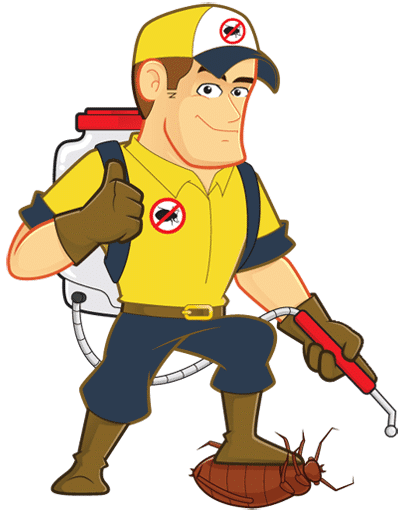
Why Hire Our Team
Our commercial pest control services deliver specialized expertise, rapid response times, comprehensive protection strategies, and fully customized solutions designed specifically for your business environment.
Expertise in Business-Specific Pest Challenges
We understand that different industries face unique pest threats. Restaurants deal with flies and cockroaches, while warehouses combat rodents and stored product pests.
Our team has extensive experience across multiple commercial sectors. We know which pests target specific business types and implement targeted strategies accordingly.
Industry-Specific Knowledge:
- Food service establishments: kitchen sanitation protocols
- Healthcare facilities: sterile environment maintenance
- Retail stores: customer-facing area protection
- Warehouses: inventory protection systems
We identify pest entry points that amateur services often miss. Our technicians understand commercial building structures, HVAC systems, and loading dock vulnerabilities.
Each treatment plan addresses the root causes specific to your industry. We don’t apply generic solutions to complex business environments.
Rapid and Discreet Service Response
Time matters when pests threaten your business operations. We provide emergency response within 24 hours for urgent infestations.
Our scheduling works around your business hours. We offer after-hours and weekend appointments to minimize disruption to daily operations.
Response Timeline:
- Emergency calls: Same-day response available
- Routine inspections: Flexible scheduling
- Follow-up treatments: Coordinated with your calendar
We use unmarked vehicles and discreet entry points when possible. Your customers and employees won’t know pest control services are being performed.
Our technicians wear professional uniforms and carry proper identification. They maintain confidentiality about your pest issues and treatment details.
Documentation is provided immediately after each service visit. You receive detailed reports without waiting days for paperwork.
Comprehensive Protection and Prevention
Our commercial pest control solutions extend beyond elimination to long-term prevention. We create protective barriers that stop future infestations before they start.
We conduct thorough property inspections covering interior spaces, exterior perimeters, and structural vulnerabilities. Every potential entry point gets evaluated and sealed.
Protection Components:
- Monthly monitoring stations
- Quarterly comprehensive inspections
- Seasonal treatment adjustments
- Ongoing vulnerability assessments
We use integrated pest management techniques combining multiple control methods. Chemical treatments work alongside physical barriers and environmental modifications.
Regular monitoring allows us to detect pest activity early. We catch problems before they become visible infestations affecting your business.
Our prevention strategies adapt to seasonal pest patterns. Different times of year require adjusted protection levels and treatment focuses.
